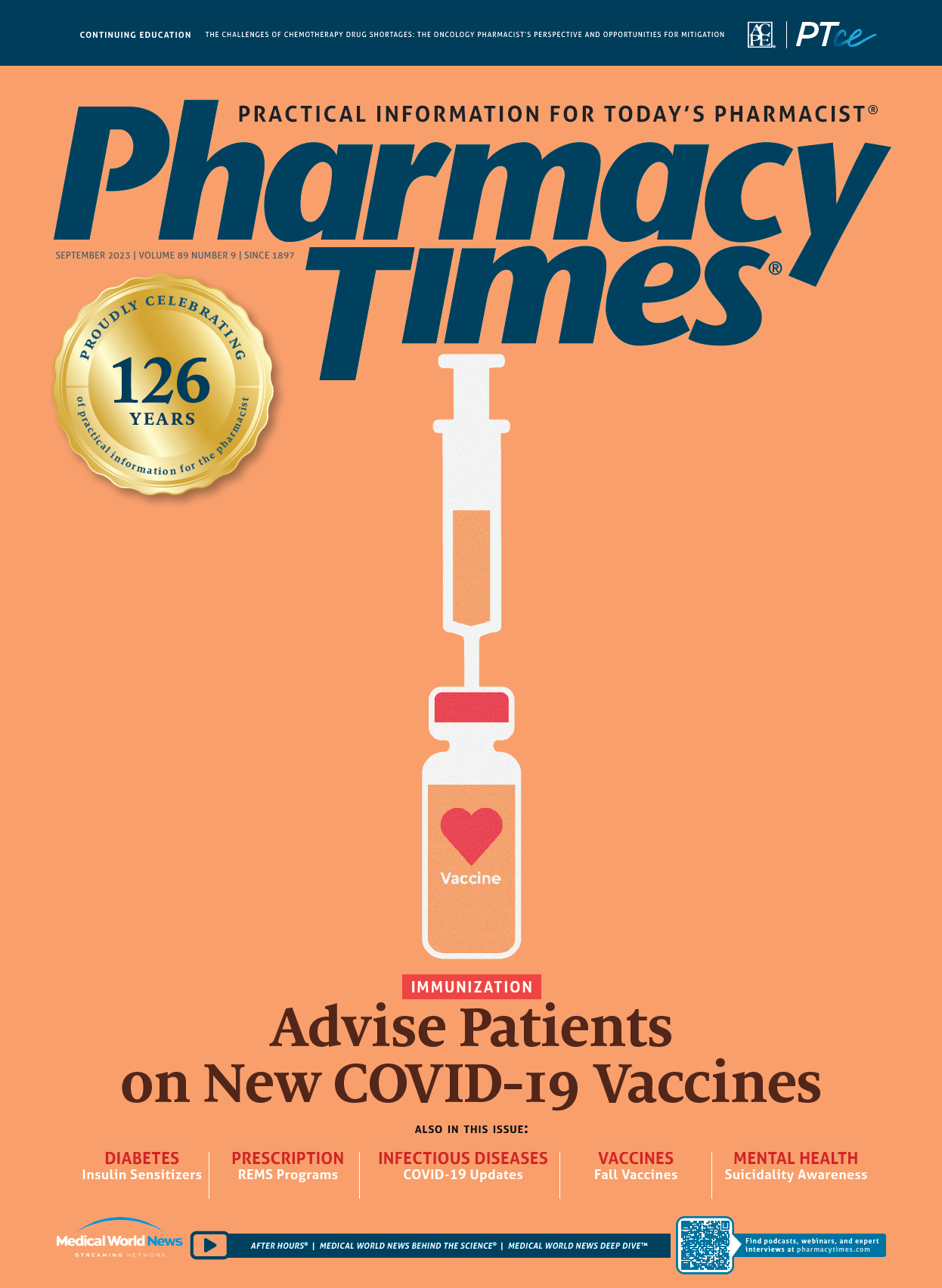News
Article
Pharmacy Times
Maximizing REMS Potential to Reduce Risk of Errors, Patient Harm
Author(s):
Incorporate Program Requirements Into Systems and Workflows.
Risk evaluation and mitigation strategy (REMS) programs were first instituted by the FDA in 2007 to ensure that the benefits of a medication with serious safety concerns outweigh the risks.1 Today, there are approximately 60 medications that have REMS requirements.
Image credit: Joel bubble ben - stock.adobe.com

REMS programs include 1 or more of the following components designed to reinforce medication use behaviors and actions that support safe use: patient information (eg, a medication guide), a communication plan, Elements to Assure Safe Use (ETASU), and an implementation system. ETASU may include certification of prescribers or dispensers, drug administration restricted to certain health care settings, specific monitoring requirements for patients, or enrollment of patients in a registry.2,3
In December 2021, the FDA launched the REMS Public Dashboard to expand efficient access to data and report-generating capabilities of REMS programs for health care providers, industry experts, and others.
Although REMS programs are intended to mitigate risk, the number of different programs and databases, the wide variety of program requirements, the scarcity of implementation tools, and the lack of organizational resources may make it difficult for frontline practitioners to meet the requirements of the various programs. However, the recommendations outlined below may help organizations make sense of these various requirements and how they can best be implemented to ensure patient safety.
Assign a REMS coordinator. Pharmacies should designate an individual who is responsible for identifying which medications dispensed at that pharmacy have REMS programs. The coordinator should be responsible for enrolling the organization in REMS programs, educating staff, and demonstrating compliance through routine audits. To ensure consistency of REMS management in the absence of the REMS coordinator, also consider cross-training staff.
Assess REMS requirements upon initial addition to pharmacy inventory. Proactively conduct a risk assessment of clinical and operational requirements for REMS medications that may be prescribed and dispensed.
Develop a policy and procedure for REMS programs. This policy should outline all medications with associated REMS programs and should include educational requirements, competency assessments, and procedures for prescribing, dispensing, and administration. Document reviews of this policy on an annual basis. Establish criteria on where and for how long REMS compliance documentation must be maintained to meet the REMS requirements. Consider creating a REMS resource binder (electronic and hard copy) that staff can access to find program requirements, even in the event of planned or unplanned downtime. Consider restricting dispensing access to staff who have received training and who have demonstrated competency in completing REMS activities, thus limiting the number of staff who can handle these medications. Some pharmacies have implemented hard stops to allow only authorized staff to process REMS medication orders.
Limit prescribing to program-certified prescribers. Health systems and medical offices should allow only REMS-certified practitioners to prescribe medications that have this REMS program requirement. If possible, build in a prompt that requires a prescriber to enter their prescriber identification (ID) number to continue placing the REMS medication order.
Build ETASU directly into the electronic health record (EHR), pharmacy dispensing system, and/or clinical management software. Consult with information technology staff and/or the EHR or pharmacy computer system vendor to build fields into computer systems to capture REMS required information, such as patient ID number, prescriber ID number, authorization codes, and/or relevant laboratory data. Build in clinical decision support to notify practitioners that they are prescribing, dispensing, or administering a medication with REMS program requirements and facilitate completion of any required REMS action. Ensure that reports may be easily generated for auditing purposes.
Educate staff and provide resources. Given the number of existing REMS programs, it is impractical for medical office and pharmacy staff to remember the requirements for each individual program. To optimize compliance, education should focus more on cues (eg, flagging that a medication falls under the REMS category in the system) and knowing what resources are available to comply with program requirements (eg, REMS policy, REMS resource binder). Also consider the use of visual cues on pharmacy shelves to help staff identify REMS medications.
Identify barriers to obtaining REMS medications. Pharmacies should identify whether REMS medications are available from their routine distributors and wholesalers, whether the medication is a limited distribution drug, or whether there is a need to transfer the prescription to another pharmacy. Monitor usage and inventory levels to ensure enough medication is on hand. Prescribers should assess for barriers to patients obtaining the REMS medication (eg, ensure prior authorization if applicable).
Develop a system to ensure the delivery of patient information. Institute protocols (eg, automatic printout) to ensure mandatory patient information is distributed to the patient when a medication with a REMS program is dispensed or administered. Pharmacies can also investigate whether their state regulations and pharmacy computer systems would enable the provision of patient education materials, including medication guides, electronically.
References
- Risk evaluation and mitigation strategies | REMS. FDA. May 16, 2023. Accessed July 26, 2023. www.fda.gov/drugs/drug-safety-and-availability/risk-evaluation-and-mitigation-strategies-rems
- Dabrowska A. FDA risk evaluation and mitigation strategies (REMS): description and effect on generic drug development. Congressional Research Service. March 16, 2018. Accessed July 26, 2023. sgp.fas.org/crs/misc/R44810.pdf
- REMS summary of terms. Prescribers’ Digital Reference. Accessed July 6, 2023. www.pdr.net/rems-summary-of-terms
About the Author
Michael J. Gaunt, PharmD, is a senior director of error reporting programs and editor at the Institute for Safe Medication Practices (ISMP) in Horsham, Pennsylvania. He also serves as the editor of the monthly ISMP Medication Safety Alert! Community/Ambulatory Care newsletter.

Newsletter
Stay informed on drug updates, treatment guidelines, and pharmacy practice trends—subscribe to Pharmacy Times for weekly clinical insights.





